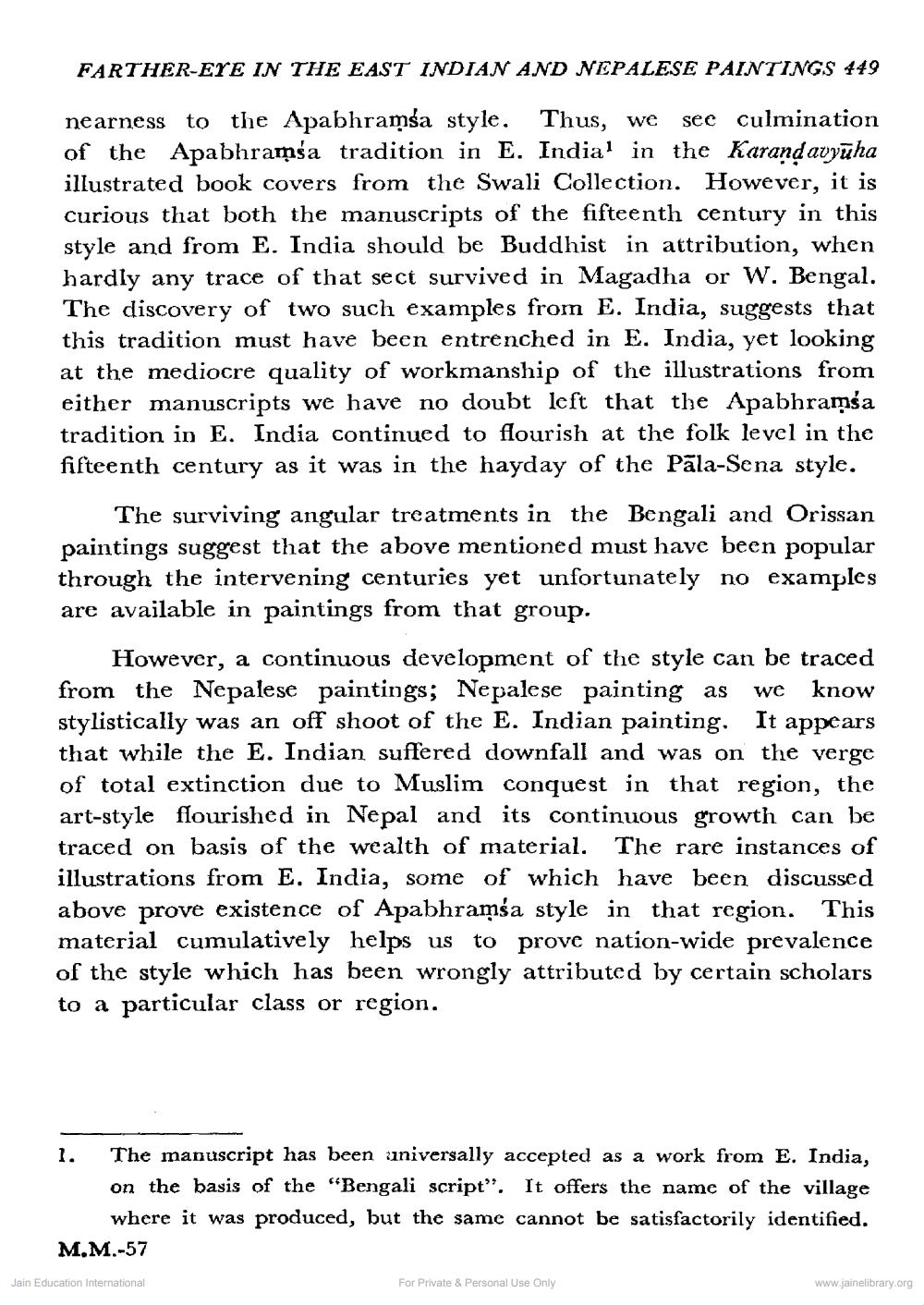________________
FARTHER-EYE IN THE EAST INDIAN AND NEPALESE PAINTINGS 449
nearness to the Apabhramsa style. Thus, we sec culmination of the Apabhramớa tradition in E. Indial in the Karandavyuha illustrated book covers from the Swali Collection. However, it is curious that both the manuscripts of the fifteenth century in this style and from E. India should be Buddhist in attribution, when hardly any trace of that sect survived in Magadha or W. Bengal. The discovery of two such examples from E. India, suggests that this tradition must have been entrenched in E. India, yet looking at the mediocre quality of workmanship of the illustrations from either manuscripts we have no doubt left that the Apabhramsa tradition in E. India continued to flourish at the folk level in the fifteenth century as it was in the hayday of the Pala-Sena style.
The surviving angular treatments in the Bengali and Orissan paintings suggest that the above mentioned must have been popular through the intervening centuries yet unfortunately no examples are available in paintings from that group.
However, a continuous development of the style can be traced from the Nepalese paintings; Nepalese painting as we know stylistically was an off shoot of the E. Indian painting. It appears that while the E. Indian suffered downfall and was on the verge of total extinction due to Muslim conquest in that region, the art-style flourished in Nepal and its continuous growth can be traced on basis of the wealth of material. The rare instances of illustrations from E. India, some of which have been discussed above prove existence of Apabhramsa style in that region. This material cumulatively helps us to prove nation-wide prevalence of the style which has been wrongly attributed by certain scholars to a particular class or region.
The manuscript has been universally accepted as a work from E. India, on the basis of the "Bengali script". It offers the name of the village
where it was produced, but the same cannot be satisfactorily identified. M.M.-57
Jain Education International
For Private & Personal Use Only
www.jainelibrary.org




